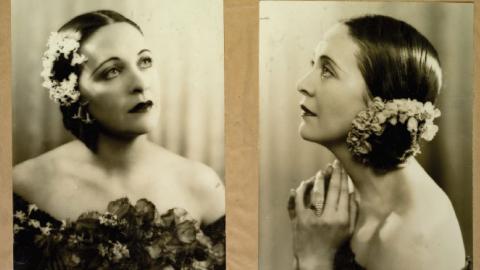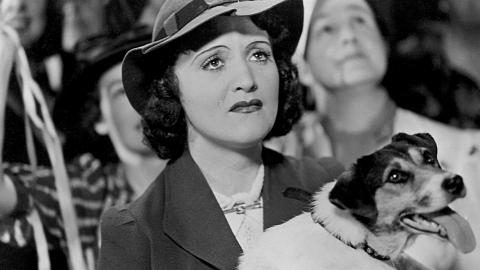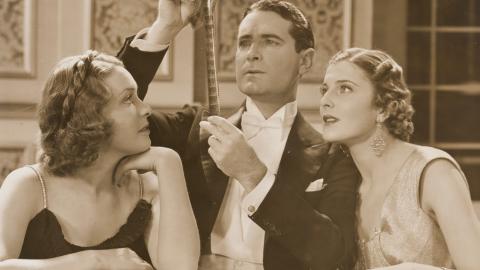
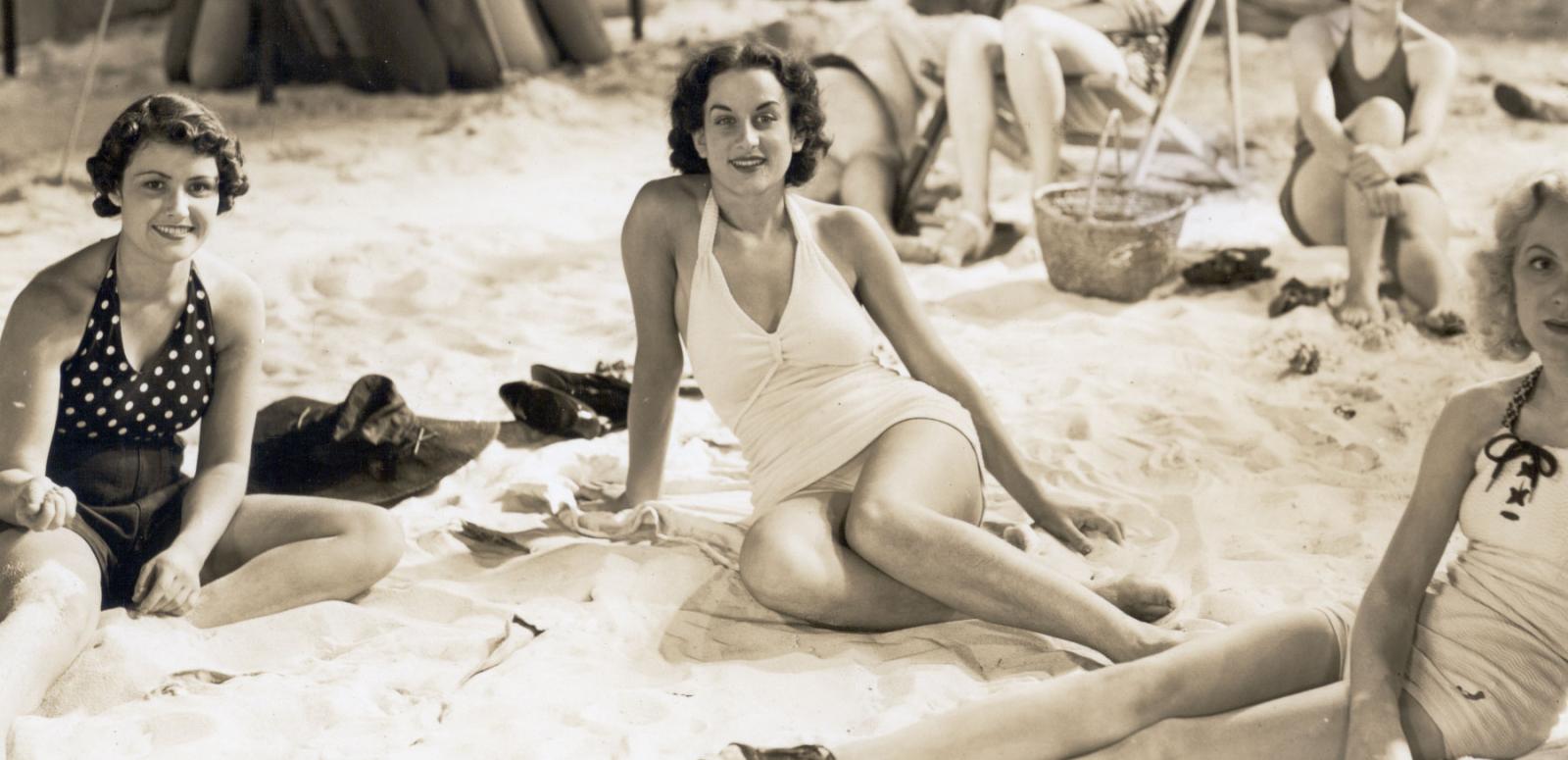
A Portrait of Pearl
Starstruck: a portrait of actress Pearl Schweig
The Starstruck: Australian Movie Portraits exhibition opens at Samstag Museum in Adelaide on 14 September and runs until 30 November. Exhibition co-curator Jennifer Coombes explores the life of Pearl Schweig, one of the actors who features in the 1930s Cinesound Casting Books that are included in the exhibition.
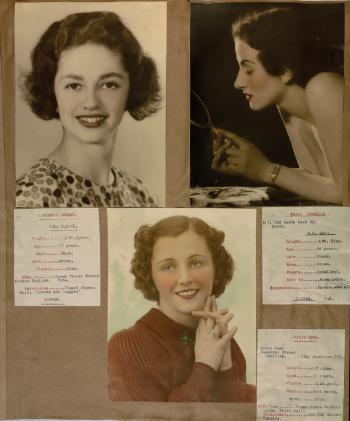
The NFSA and National Portrait Gallery exhibition Starstruck: Australian Movie Portraits features several casting books compiled by Cinesound Productions in the 1930s. These books contain portraits of aspiring hopefuls wanting to break into the Australian film industry.
Introducing Pearl
Next to the photos are typed and handwritten notes describing the person's physical description, skills and attributes. According to her particulars, Pearl Schweig was able to ride and drive. She was 20 years old, clever, with brown eyes, black hair and an excellent figure.
But that is only a small part of her story. She posed for Norman Lindsay, starred in a number of Australian films – including international sensation On the Beach in 1959 – and appeared in the society pages as ‘the glamorous Pearl Schweig’ under headlines such as 'Beauty is more than film deep!'.
Surf Queen and Norman Lindsay model
Pearl was born in Bondi on 12 April 1918 to Joseph and Gertrude Schweig, a Polish tailor and London dressmaker who had a store on Sydney's George Street. Pearl got her big break when her friend secretly sent her photograph to the 1937 Miss Bondi Surf Queen competition and the judges selected her to model at the Bondi Pavilion with other finalists. She won the sash and was invited to pose by artist Norman Lindsay, although she had never heard of him.
In a 2009 ABC radio interview with Sally Mason, she remembers being called by Norman's son Jack, who told her ‘my father would like to meet you and paint you’. Norman Lindsay had a studio in Bridge Street and when he finally met Pearl he told her, 'I want to paint your head and I like those devilish eyebrows!’.
She posed for him fully clothed as well as nude and found him ‘a thorough gentleman’, although her parents ‘went to their graves without ever knowing’. Some of the more famous works she posed for included The Amazons (1939) and Imperia (1940), a nude in repose.
Let Pearl do it
In the late 1930s Pearl was one of many actors applying to the Cinesound Talent School in the hope of winning a film role.
As her photographs show, and as glowingly described by the Courier Mail, ‘she was reminiscent of Joan Crawford with a smattering of Jane Russell … [her] hair [was] set in the style of the time, cheeks hand-painted, eyebrows arched intriguingly. Pretty is boring: this woman is striking!’.
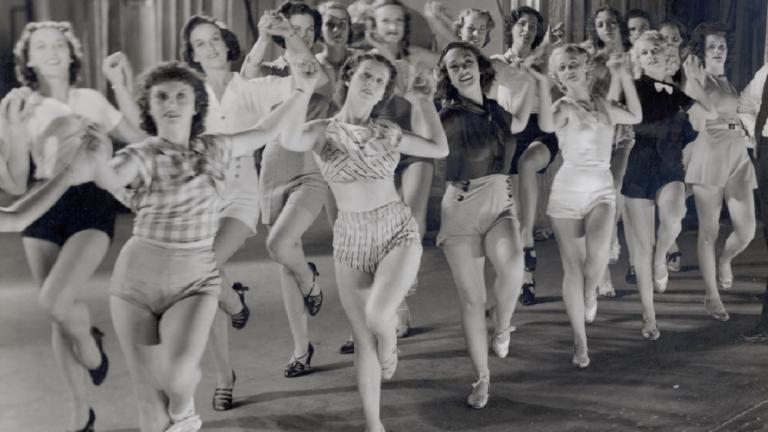
Production photo from Let George Do It (1938). Pearl Schweig is in the second row, second from left. NFSA title: 353730
Click on image to open
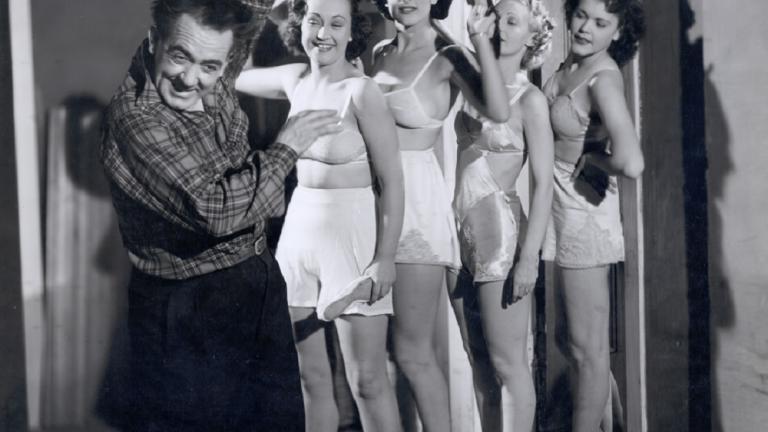
Production photo from Let George Do It (1938). Pearl Schweig is second from left. NFSA title: 563182
Click on image to open
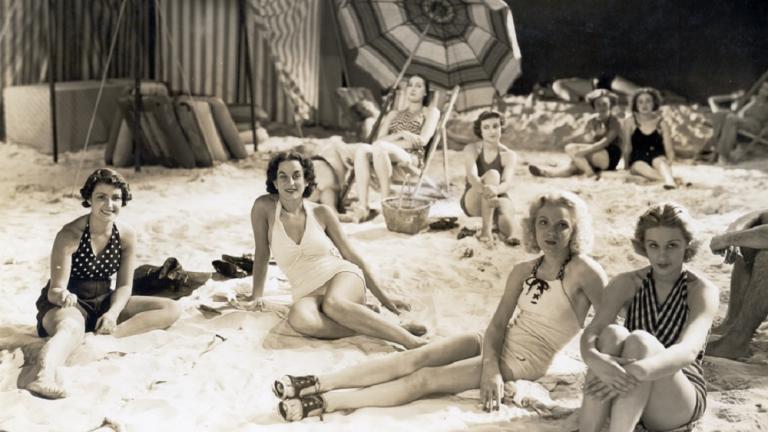
Production photo from Tall Timbers (1937). Pearl Schweig is second from left. NFSA title: 568947.
Click on image to open
Cinesound gave her a number of small roles in films directed by Ken G Hall, including Tall Timbers (1937) and Let George Do It (1938). She appeared in swimming scenes in both productions, including a spectacular water ballet sequence in the latter.
Pearl also appeared in Broken Melody (1938) and as an Egyptian spy in Charles Chauvel’s Forty Thousand Horsemen (1940). She later played parts in the long-running television series Homicide (1964–77) and Bellbird (1967–77).
Pearl was an accomplished theatre actress – in fact, theatre was her first love, as she recounted to the ABC in 2009: ‘At that time JC Williamson was of course the big theatre company and I started as a showgirl … which of course I just loved … I was required to wear these enormous headdresses and walk down lots of stairs without looking down!’.
She received favourable reviews for productions like Paris Le Soir and The Sky’s the Limit at the Tivoli Theatre in Melbourne and The Women at Adelaide’s Royal Theatre in 1939, where she celebrated her 21st birthday with the cast. The production later toured New Zealand.
A Dream Life
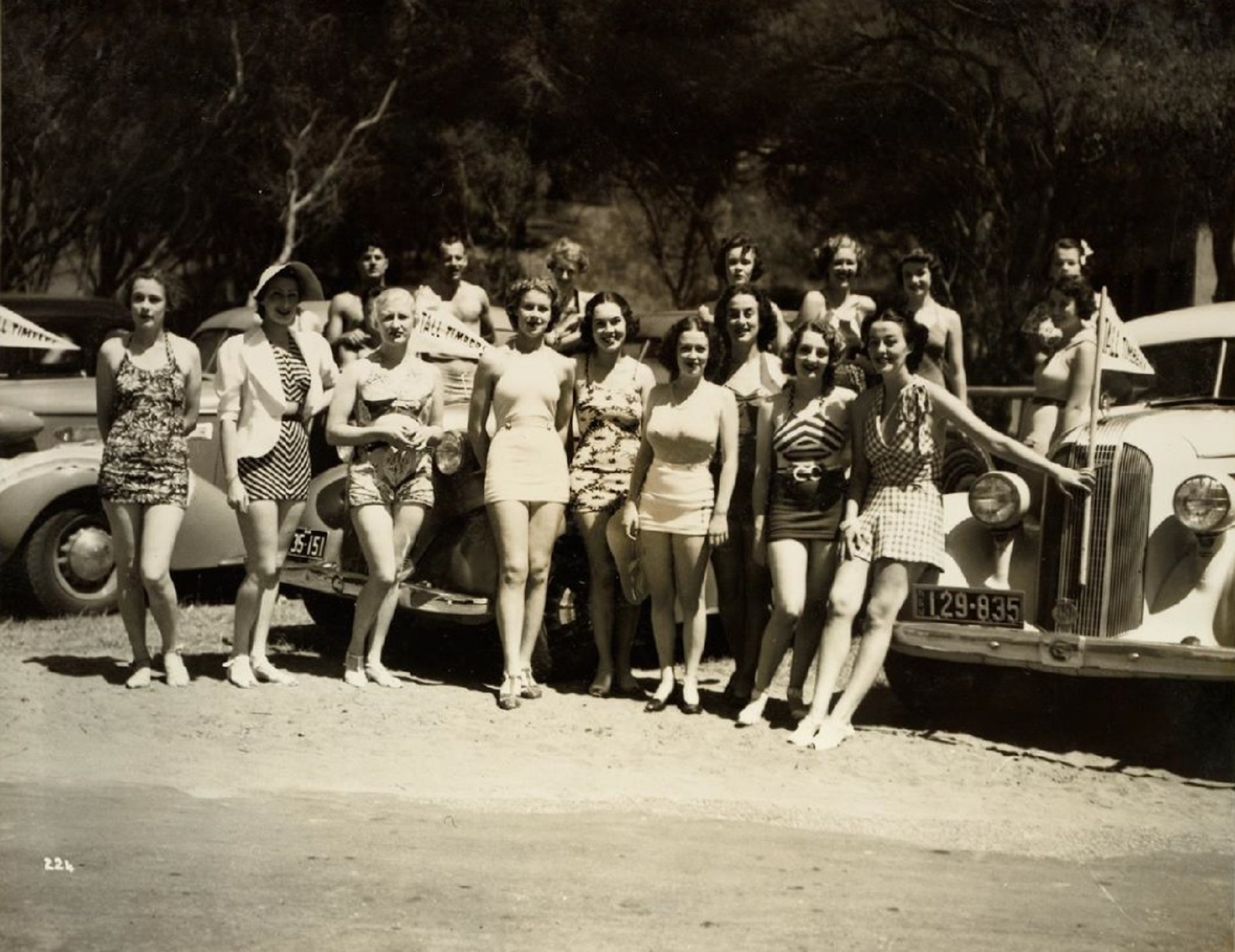
Her love life was also dramatic and glamorous. She married first husband Maurice Copolov, a well-known Melbourne businessman, in 1947. He was also a hypnotist and owned racehorses.
Pearl had been planning to quit the theatre after their wedding but continued to act, starring alongside a number of visiting celebrities including Fay Compton and Noel Coward.
After Maurice’s death she took a spontaneous first trip overseas to New York in 1969 and met Sydney Goldman, vice-president of Radio City Music Hall. By the end of that year she was married to him and attending parties alongside Sophia Loren, Audrey Hepburn and William Holden.
Eventually retired and living on the Gold Coast, she reflected, 'When I think of all the exciting things that happened in my life, I can’t quite believe it… It’s my life but it’s like a dream.'
Pearl Schweig Goldman died at the age of 98 in June 2016. Writer Josephine Pennicott, who used Pearl as inspiration for one of her fictional characters, celebrated ‘her vibrant spirit dazzling wherever she has journeyed … It felt so special to be in the room with the last of Norman Lindsay’s life models.’
Starstruck opens at Samstag Museum on 14 September. Visit the Starstruck Australian Movie Portraits website.
The National Film and Sound Archive of Australia acknowledges Australia’s Aboriginal and Torres Strait Islander peoples as the Traditional Custodians of the land on which we work and live and gives respect to their Elders both past and present.
